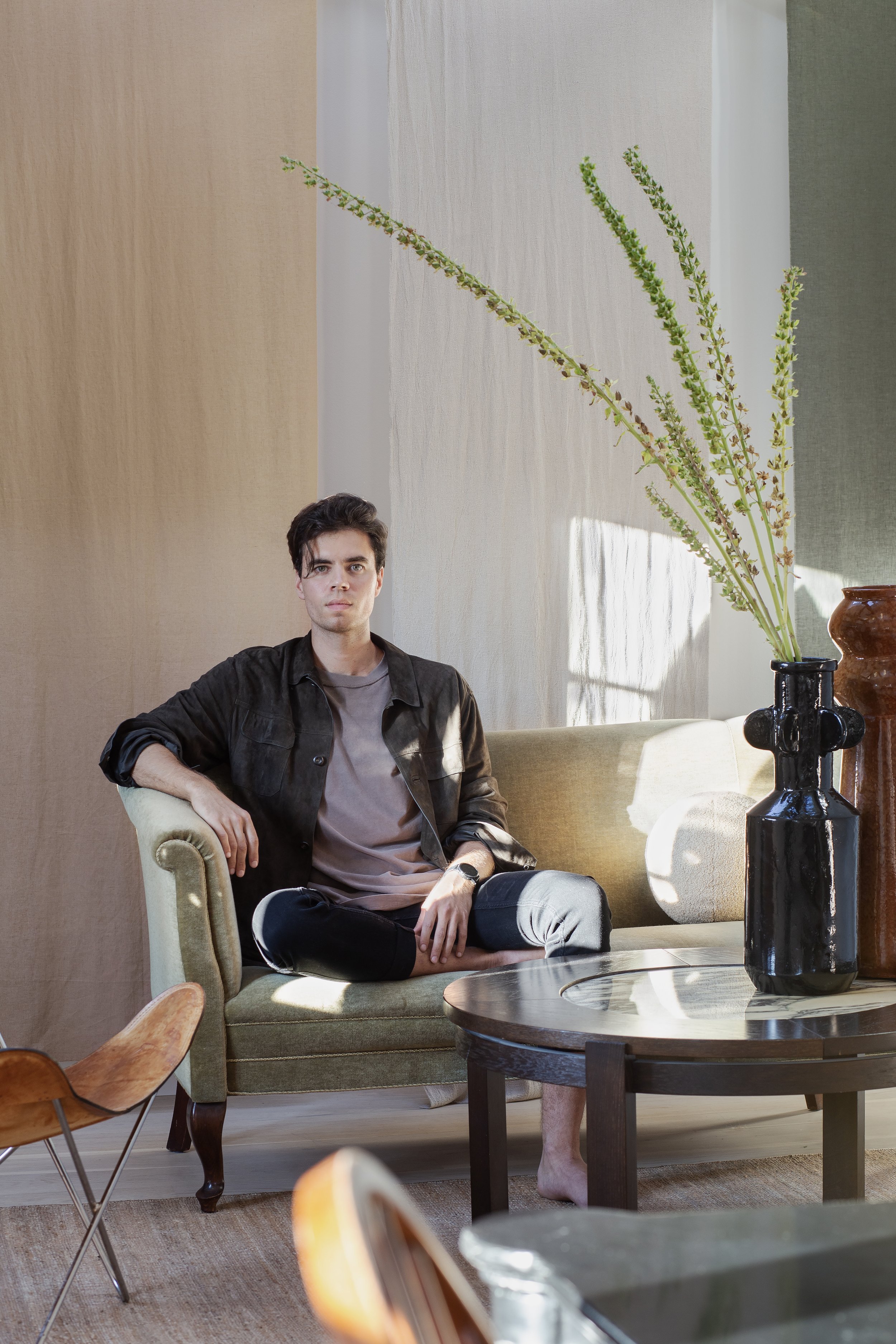HUS 42
Situated beside one of Denmark's deepest lakes, with fewer than 20 inhabitants, the small village of Glenstrup in Northern Jutland has become the site of a long-term project aimed at reinvigorating long-abandoned farmhouses. Why there? It happened organically – a child followed their parents, who fell in love with the place, spending time fishing, reading Scandinavian literature, and simply savouring the silence.
The decision to buy the first house was made on the spot; it was intuitive and instinctive. Hus 42 stood there empty for over 10 years, begging for some love and attention. Built in 1931, for decades it served as the residence of a farmer who worked for a major landowner, whose estate is the neighbouring property.

Bringing Hus 42 to its current state took five years. It took time to learn the stories inscribed in its walls and understand what they could become next. It was not just a renovation. Alongside the construction works, relationships with neighbours were established, and these relationships influenced to some extent what Hus 42 has become. Those neighbours who quickly became dear friends guided the process by sharing their knowledge about the region and inviting us into their homes. This learning informed how Studio Onu addressed Hus 42.



Having fallen in love with the natural beauty of the area, Studio Onu had the ambition to open up this forgotten 1930s farmhouse to allow the light and views of the surroundings to penetrate the building. In keeping with the era, Hus 42 had many enclosed spaces that felt small and dark due to the low ceilings and small windows. While respecting the historical skin, Studio Onu wanted to challenge the introverted nature of the building and articulate a respectful contemporary architectural intervention.




This 60m2 footprint house originally functioned as one unit across all three levels. In its new form, Hus 42 is split into two independently functioning apartments. The lower ground floor, serves as the permanent residence of the owners, while the upper floors are combined for visitors. Even though they are separate, they exhibit continuity in terms of colours, materials, and textures.









The floor level of the lower apartment was deepened by over half a meter to achieve a comfortable ceiling height. The window height was increased to match the windows on the level above. This transformation turned a dark basement into a bright, spacious space that bathes in bright afternoon light and enjoys the views of a wildflower meadow outside.

The desire to bring light into Hus 42 and celebrate the built form similarly drove the transformations of the top apartment. There, portions of the ceiling were removed to create double-height spaces with skylights, showcasing the original wooden beams. Windows at the back of the house were brought down to the ground to bring in more light and allow direct access to the terrace from the kitchen and the bedroom. The small attic spaces were completely opened up, creating a generous relaxation area that offers views of the lake to the north, the garden to the east, and the village to the west.






The materials and interior furnishings throughout the house were inspired by an attempt to capture the essence of Jutland – traditional crafts, livelihoods and the beauty of nature in this northern corner of Denmark – but they serendipitously carry a story of its connection to people across Europe.
The dining table in the upper apartment was purchased from one of the neighbours, an old farmhouse table that had been dismantled and leant against the wall in a barn, waiting for its second life for years. Its visual and physical heaviness grounds the space with its massive turned wood legs. Studio Onu combined it with a set of six classic Windsor chairs that had somehow found their way to Denmark and were later discovered in one of the second-hand shops. An ornamental iron furnace, produced in 1875 in Germany by Burger Eisenwerke, serves as an intricate sculpture that draws attention to the central wall of the living and dining area.

This geographical mix tells us a story about a complex socio-political situation and the influences of other countries on Denmark over centuries. The lampshades were crafted from clay by a contemporary Polish designer, the rough texture serving as a reminder of our connection to the earth. The warm, reddish light they emit creates an illusion of the warmth of a fire.


These furnishings are offset by the décor within the house which is imbued with the colour palette of the area where the warm, natural tones of beige and green are occasionally punctuated by vibrant colours, resembling the flowers in the adjacent meadow. The range of textures spans from sleek, cool ceramics to uneven, rustic wood, and densely woven fabrics.


It is the linen fabrics, in particular, that create texture within the simple space. Their fluidity is a reminder of the natural environment just beyond the window. The draping fabric accentuates the height of the space, subtly screening areas of the house to provide privacy but also making the whole feel larger.









Hus 42 is part of a larger project. Studio Onu is already working on the adjacent Hus 43, where they are planning a flexible creative space with the potential for art residencies.
Hus 42 is now available for you to delve into its unique narrative.
Photographer: Martyna Rudnicka
Interior Stylist: Anna Salak
